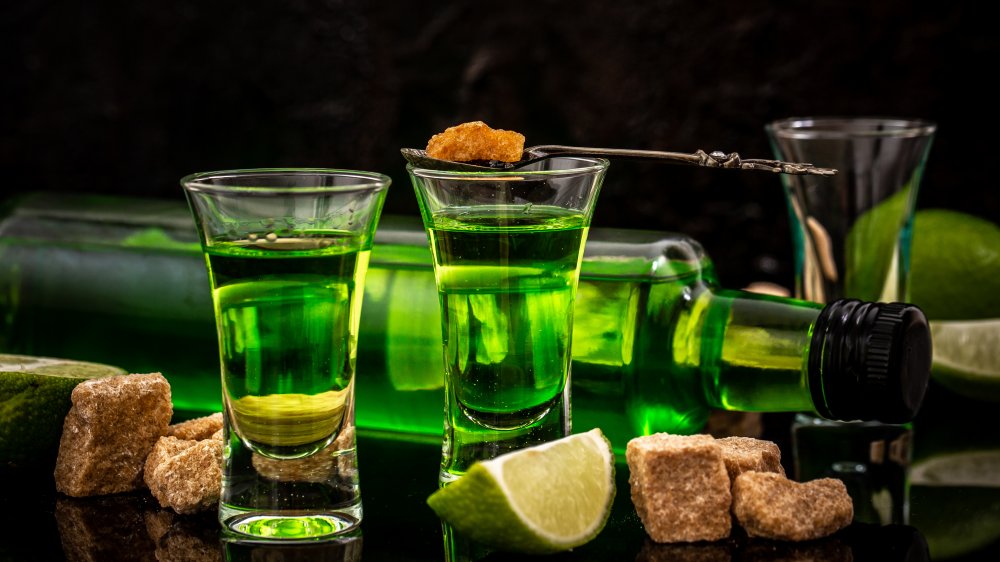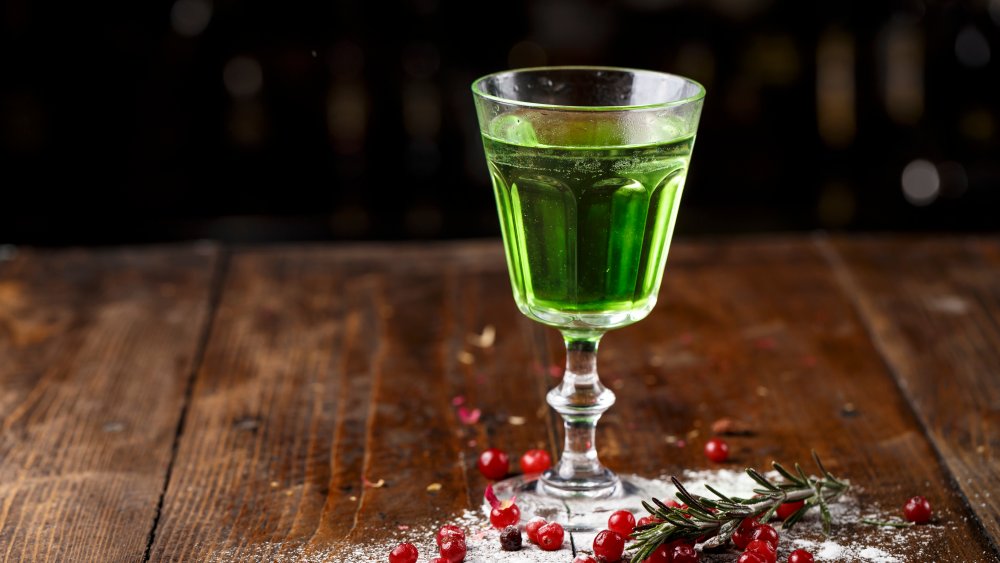The Reason Absinthe Is No Longer Banned In The U.S.
Absinthe, known more affectionately as the "Green Fairy," was once one of the most prolific drinks in Europe — and the United States too. The Swiss-born drink was actually used by the French in the late 18th century to help the soldiers ward off malaria. While the green-hued drink was used for military health at one point, its audiences' inclination toward the licorice-tasting drink is what made it so incredibly popular and widespread (via Vine Pair).
Absinthe is made by macerating three primary herbs in sugar and water. These primary herbs include fennel, anise, and wormwood. The first two give the drink its singular flavor, while the wormwood provides the drink's distinct green color (via Mic).
Wormwood is also the culprit many turned to when arguing to ban absinthe. It turns out that wormwood has a toxic chemical that is also found in tarragon and sage. When absinthe was so popular, it was thought that this toxic chemical, thujone, was responsible for the extreme drunkenness that absinthe was associated with. While we like to think that it was a hallucinogenic that inspired so many of the famous artists who drank it, it actually doesn't really cause visions.
It's all about the amount of thujone levels in absinthe
Apparently, the chemical was not really to blame, but instead, it was just the sheer amount of alcohol people were drinking at the time. The effects of thujone are actually the same as alcohol. That means things like tunnel vision and delayed reaction time can happen when you drink too much alcohol — or consume too much thujone.
Thanks to the herbaceous taste that so many loved, people simply drank way more than they should have. Paired with the fact that absinthe is already very high in proof, the drink caused extreme drunkenness for many.
While thujone levels were basically fine during the heyday of absinthe between 1850 and 1900, absinthe is regulated by the Food and Drug Administration today to ensure its safety. Levels of thujone must be 10 milligrams per liter in the United States for it to be legal, whereas in Europe, there are usually 38 milligrams per liter in bottles. Essentially, in order for absinthe to be unsafe, people would have to drink so much that they'd get alcohol poisoning before the thujone would affect them, but regardless, the drink is now legal to buy and consume in the U.S.

